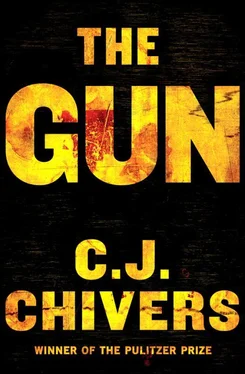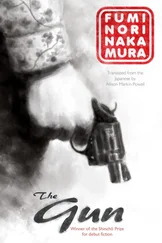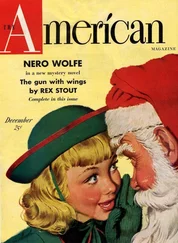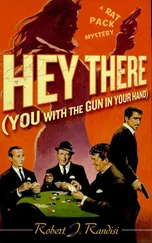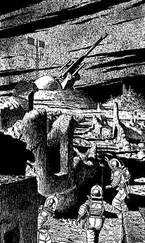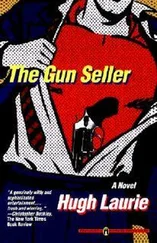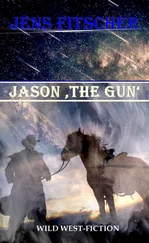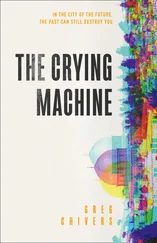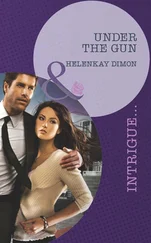Bin Laden understood the symbolic potency of his choice. Others keep their Kalashnikovs near for more practical tasks. By the time Saddam Hussein was pulled from a hole in Ad Dawr, in late 2003, the fugitive president had distilled his possessions to a modern outlaw’s basic needs: two AK-47s and a crate of American cash. (He also had a pistol, a 9-millimeter Glock.) Kalashnikovs are not just tools for the battlefield. They guard South American coca plantations and cocaine-processing labs. In Los Angeles they have served bank robbers and urban gangs; in the northwestern United States survivalists squirrel them away in anticipation of the worst. African poachers use them to thin wildlife populations and defend their illegal trade against antipoaching patrols, which carry Kalashnikovs, too. In the western Pacific, the aboriginal Chukti people fire Kalashnikovs at migrating gray whales, the post-Soviet manifestation of an ancient hunt the Chukti call traditional, even as they slap magazines into place and click their infantry arms off safe. Given that the automatic Kalashnikov was conceived with the intention of shooting 160-pound capitalists, its use against 30-ton marine mammals would seem ill-advised. But the rifle at hand is the rifle that gets used. Kalashnikovs are regularly at hand.
No one can say for certain how many Kalashnikovs exist today. Their production in secrecy, often in some of the planet’s harshest dictatorships, has made precise accounting impossible. One point is beyond dispute. They are the most abundant firearms on earth. Since the Soviet army chose the AK-47 for distribution to Soviet ranks, automatic Kalashnikovs have been made in Albania, Armenia, Bulgaria, China, East Germany, Egypt, Hungary, Iran, Iraq, North Korea, Poland, Romania, Russia, Yugoslavia (now Serbia), and the United States. Knock-off versions, incorporating the main elements of Kalashnikov’s operating system, were developed in Croatia, Finland, India, Pakistan, South Africa, and Israel. (The Israel Defense Forces were so impressed, and concerned, by the performance of Egyptian Kalashnikovs in the Six Day War in 1967 that Yisrael Galili and Yaacov Lior borrowed the AK-47’s main features to create a series of weapons at Ramat HaSharon.) More Kalashnikovs are made every year (though at a lesser pace than in decades past). Venezuela plans to build a new plant, which could be used to arm groups throughout the region in a new round of opaque handouts. A single comparison provides a sense of the automatic Kalashnikov’s spread. The second-most-abundant family of rifles is the American M-16 family; fewer than 10 million have been made. 6 [1] Other older and more traditional rifles would displace the M-16 from second place if they were still in widespread service, but they fell from common use with the spread of assault rifles. The British Lee-Enfield line, for example, was manufactured in greater numbers than the M-16 during its many decades in use across the old British Empire.
Serious estimates put the number of Kalashnikovs and its derivatives as high as 100 million. There could be one Kalashnikov for every seventy people alive.
Where did all these rifles go? Huge numbers filled state arsenals, issued to Eurasian communist armies and stockpiled around the Cold War’s anticipated fronts. Untold millions were sold, others simply given to those thought to need them by the KGB and the Soviet army or their cousins in other communist states. During decades of influence jockeying, the Cold War saw the shipment of enormous quantities of Kalashnikovs to proxy forces, from the Viet Cong to militias in Beirut. Lists resemble tour guides to troubled lands: Russian, Chinese, and North Korean Kalashnikovs were carried by the North Vietnamese Army; Polish Kalashnikovs were shipped to the Contras; East German Kalashnikovs went to Yemen; Romanian AKs armed the Kurds; Russian and Bulgarian AK-47s supplied Rwanda; the United States directed Chinese and Egyptian Kalashnikovs to Afghanistan’s anti-Soviet mujahideen. Chinese Kalashnikovs are abundant in Uganda and Sudan. By the time the Iron Curtain fell, it had become difficult to travel outside Western democracies without seeing Kalashnikovs in some form. There are more Kalashnikovs circulating now than then; when state socialism collapsed, arsenals were looted and weapons locked within were trucked away for sale. For people who study the universe of disorder, automatic Kalashnikovs serve as reasonably reliable units of measure. Arms-control specialists and students of conflict look to the price of Kalashnikov assault rifles in a nation’s open-market arms bazaars to determine both the degree to which destabilized lands are awash in small arms and the state of risk. When prices rise, public anxiety is considered high. When they sink, the decline can indicate a conflict is ebbing. Because there is no surer sign that a country has gone sour than the appearance of Kalashnikovs in the public’s grip, they can also function as an informal social indicator, providing another sort of graduated scale. Anywhere large numbers of young men in civilian clothes or mismatched uniforms are carrying Kalashnikovs is a very good place not to go; when Kalashnikovs turn up in the hands of mobs, it is time to leave.
In the aftermath of the Cold War the overabundance of automatic Kalashnikovs has remained a persistent factor in terrorism, crime, ethnic cleansing, and local and regional destabilization. Their widespread presence empowers unflagged and undisciplined forces to commit human rights abuses on a grander scale, raises the costs and exacerbates the dangers of peacekeeping missions, emboldens criminals of many sorts, stalls economic development, and increases the social burdens of caring for the wounded, the orphaned, and the displaced. Having been shipped to regions rife with the tensions of poverty, poor governance, and high ethnic, religious, or nationalist sentiment, the avtomat has helped to instigate and expand conflicts. And the prevalence of the Kalashnikov has helped the modern underground fighter to transform himself into today’s protean, shadowy enemy, giving shape to the Pentagon’s term for the conflicts in which the American military is almost irretrievably enmeshed—asymmetric war.
Studies of military small arms have documented their role in a stubborn toll of instability, injury, and death. The United Nations convened a conference in 2001 by noting that small arms were principal weapons in forty-six of the forty-nine major conflicts in the 1990s, in which 4 million people died. In 2004 Human Rights Watch identified eighteen nations where child soldiers are still used. For most of these wars and most of these young conscripts, Kalashnikovs are the primary arm. The available American casualty data from Iraq show that bullets fired from the Eastern bloc’s family of firearms remain, injury by injury, the most lethal wounding agent on the battlefield. (In Afghanistan and Iraq, bombs have killed more soldiers. But of all the ways a soldier could be wounded there, bullets have been more likely to kill than any other. Put another way, soldiers wounded in bomb blasts have a statistically greater likelihood of survival than those who have been shot.) Moreover, Kalashnikovs outlive strife; bandits find them as useful as soldiers ever did. Even a single Kalashnikov can set a nation in motion. In 1989, after the drifter Patrick Purdy opened fire with a Kalashnikov on a schoolyard in Stockton, California, striking thirty-four children and a teacher, Congress began work on the assault weapon ban. Purdy did not use a true automatic Kalashnikov. His rifle was not an automatic. It had been modified to shoot a single bullet with each trigger pull, making it no more dangerous (and arguably less, considering the medium-powered cartridges it fired) than the rifles in many a deer camp. The facts hardly mattered. The mere appearance of a Kalashnikov in a schoolyard crowded with children, its look, was enough to put Congress in a lawmaking mood.
Читать дальше
